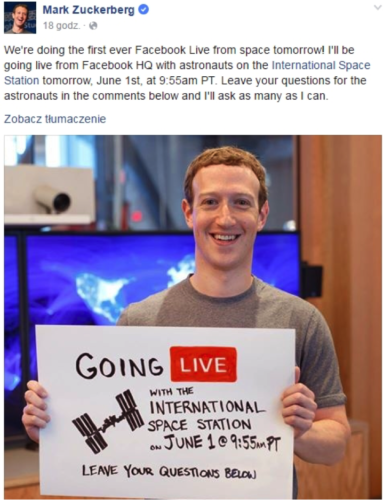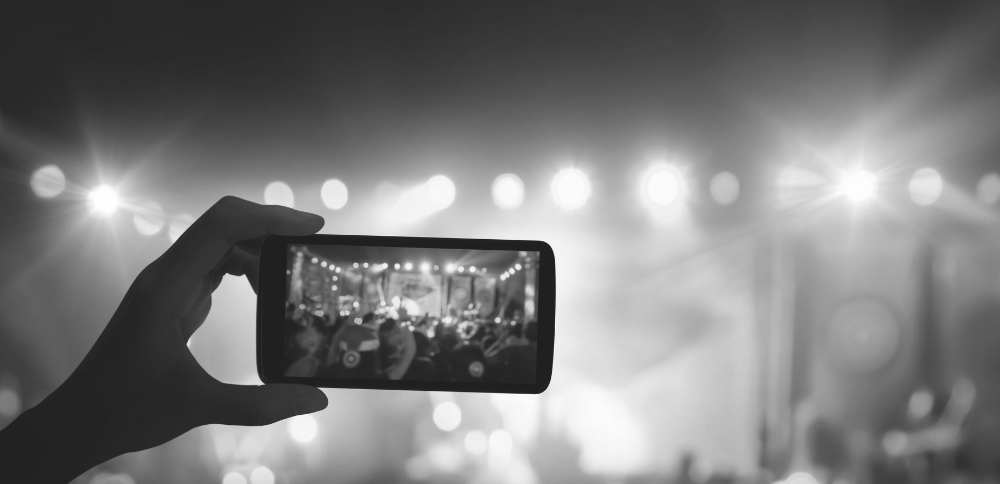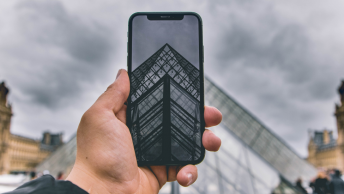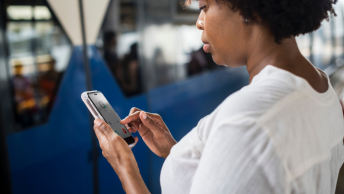Facebook has joined the ranks of Periscope and Meerkat since making its live streaming feature available to all community members. Connecting with your audience in real time can enhance your digital brand, but before you start your next broadcast, review these practical tips for Facebook Live.
How to Start a Facebook Live Broadcast
1) From the Facebook app, tap “what’s on your mind?” or “Status”
2) Select the live video icon
3) Fill in the description and select your audience

4) Select front or back camera for your broadcast
5) Tap “Go Live”
15 Practical Tips for Facebook Live
Now that you know how to start a live broadcast on Facebook, follow the tips below to go from novice to pro.
1) Add a catchy description or caption with a call-to-action
Your description can be just a few words, but they need to be powerful. Those words can determine whether a potential viewer continues scrolling down his or her newsfeed or stops to watch your broadcast and engage with your brand.

2) Promote and advertise before streaming
Facebook Live videos can be broadcasted publicly. If you select this option, Facebook users who are not following your page or account can view your broadcast.
For open broadcasts, promote your upcoming live stream on your Facebook page, Twitter, Instagram, Snapchat and other social networks for the best chance at garnering a larger audience.
Make sure to include exact dates and times for your video as well. Use images, gifs, short clips- or any other media to build excitement.

3) Ask viewers to turn on live notifications
If you want your viewers to be notified about your live videos, ask them to turn on the notifications during your broadcast. By tapping the “Live Subscribe” button at the top of your live video, they may be notified about your live videos.

4) Length Matters
While Facebook does not set a minimum length of time for your live broadcast, they currently have a maximum length of 90 minutes. I personally recommend a minimum length of 10 minutes.
Of course, you don’t need to be so precise, but the longer your live transmission, the greater your opportunity for exposure. If you plan to live stream for less than 10 minutes, your session may end before many of your followers or potential followers have had the chance to tune in.
5) Remember the latecomers
Some will tune in late. There’s no harm in dedicating two minutes to an introduction or opening. This will allow you to accommodate those who are not exactly on time without keeping the rest of your audience waiting.
6) Maintain quality lighting
Lighting is important for video quality and your viewer experience. If your lighting is poor, viewers may not enjoy your broadcast and may leave your session.
A dark or blurred screen can discourage people from tuning in.
While you don’t need professional lamps or other expensive equipment to create your own mini studio, you do need to make sure there is enough lighting for you or any activity you are trying to capture to be visible. Get creative and find good lighting at your location!
7) Check your internet connection and WiFi speed
The host of a Facebook Live session should try to minimize technical difficulties.
I recently watched a broadcast that was well-advertised and had a large audience. However, although the host had a well known speaker, most viewers had a bad experience because of the technical difficulties.
The live stream lagged and the sound was not always audible. It was very clear that the organizers were not prepared to host the session.
Don’t let this be you!
I would highly recommend double checking your internet connection before your transmission. In order to do so, you could even change your settings to “only me” so that viewers will not be aware of your test.
If your connection should ever stop during a live session, do not end the broadcast. Facebook automatically refreshes the connection and it will bring you back on the air when your connection returns.
8) Perform a sound check
Viewers should be able to hear the live stream audio clearly. I would recommend testing your mic and sound settings with a private broadcast on your device before going live.
9) Make sure the screen is stable
Don’t distract your viewers’ attention with an unstable screen. If you don’t own a tripod, you can employ a makeshift one by resting your phone against another immovable object. Just make sure your microphone is not covered.
10) Have a clear topic or subject
Having a clear topic can help you stay organized and keep the conversation on track. If you try to cram too much within a small time frame, your viewers may get lost. Stay focused to make sure they leave understanding your intended message.
11) Be engaging
Remember that you don’t host Facebook Live sessions for yourself, but rather your viewers. Engage viewers and make them feel valued.
- Solicit questions
- Ask viewers to share their opinions
- Respond to audience questions and comments during your broadcast
- Ask for feedback
Following these steps will help you receive great feedback and build strong bonds with your viewers. That is what you want, right?
12) Change the perspective
To make your live transmissions more interesting, you can switch between the front and back camera of your smartphone where appropriate. Switching views can help you keep your viewers’ attention. Of course, this should not be overdone because constantly alternating can be distracting.
13) Leverage your completed recording
If someone missed your session or you would like to share the content to convince viewers to watch your next live stream, encourage your audience and social following to access the video of your completed broadcast.
You can also watch your Facebook Live videos to discern what was effective and what should be improved upon before your next transmission.
14) Analyze the statistics
Check the statistics for your live stream sessions. You will find information about reactions, comments, and reach. Use the information gathered to inform your strategy. You can also size up the competition by watching competitor videos.
15) Be yourself
While it may sound cliche, remember to stay true to yourself. Let your identity shine through. With tools like filters and colors, you are free to add your own flair.
Think about your unique characteristics and capitalize on them in order to stay memorable!
Let us know how these tips help improve your next Facebook Live broadcast!













